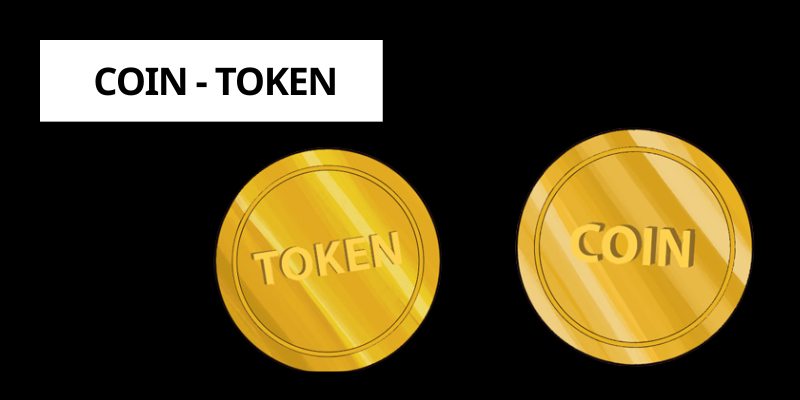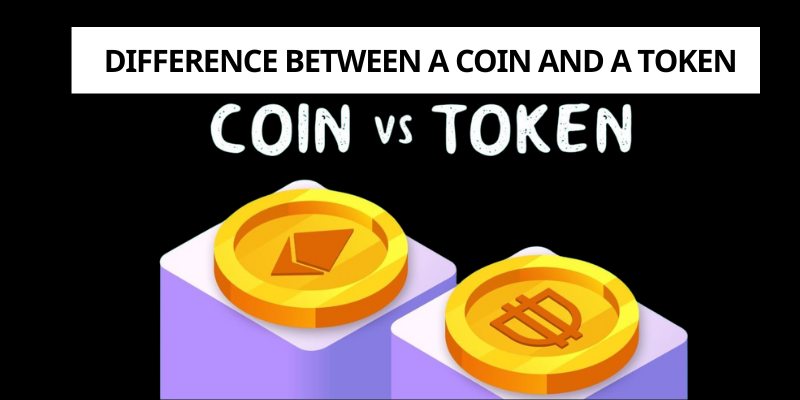In the rapidly evolving world of blockchain technology, understanding the difference between a coin and a token is essential for navigating the complexities of digital assets. While both coins and tokens are critical components of the cryptocurrency ecosystem, they differ significantly in their technical foundations, functionalities, and applications. This article provides an in-depth exploration of the difference between a coin and a token, shedding light on their roles, use cases, and implications for the future of decentralized economies.
What Are Coins and Tokens?
The difference between a coin and a token begins with their definitions. A coin is a cryptocurrency that operates on its own dedicated blockchain. It serves as the native currency of that blockchain, facilitating transactions, governance, and network operations. Prominent examples include Bitcoin (BTC), Ethereum (ETH), and Solana (SOL). Each coin is tied to a specific blockchain, which defines its consensus mechanism, security protocols, and economic model.
A token, on the other hand, is a digital asset issued on an existing blockchain, typically through smart contracts. Tokens do not have their own blockchain but rely on the infrastructure of platforms like Ethereum, Polygon, or The Root Network. They can represent a variety of assets or utilities, such as stablecoins, governance rights, or digital collectibles. Examples include USDC, AAVE, and Futureverse’s ASTO token. The difference between a coin and a token is thus rooted in their technological dependency: coins are standalone, while tokens are dependent on host blockchains.

Difference Between a Coin and a Token in Blockchain Ecosystems
Technical Underpinnings
The difference between a coin and a token is further highlighted by their technical structures. Creating a coin requires developing a new blockchain, a complex process that involves designing consensus algorithms, securing the network, and fostering community adoption. For instance, Bitcoin’s blockchain uses proof-of-work, while Ethereum employs proof-of-stake. Coins are integral to their blockchains, powering transactions, staking, and governance.
Tokens, by contrast, are simpler to create, as they leverage the security and infrastructure of existing blockchains. Developers can issue tokens using standardized protocols, such as Ethereum’s ERC-20 for fungible tokens or ERC-1155 for multi-asset tokens. This ease of creation makes tokens highly versatile, enabling applications in decentralized finance (DeFi), gaming, and metaverse ecosystems like Futureverse. The difference between a coin and a token in technical terms lies in their creation process: coins demand a new blockchain, while tokens piggyback on established ones.
Diverse Applications
The difference between a coin and a token is also evident in their applications. Coins are primarily designed as digital currencies or stores of value. Bitcoin is used for peer-to-peer payments, while Ether powers smart contracts and dApps on Ethereum. Coins often serve as the “fuel” for their blockchains, covering transaction fees and incentivizing network participants through staking or mining rewards.
Tokens, however, have a broader range of use cases. They can represent financial instruments (e.g., stablecoins like USDT), utility within a platform (e.g., LINK for Chainlink’s oracle services), or unique assets (e.g., NFTs in Futureverse’s ecosystem). Tokens enable innovative models like play-to-earn gaming, decentralized governance, and virtual real estate. The difference between a coin and a token in this context is one of scope: coins are general-purpose, while tokens are purpose-specific.
Implications for Stakeholders
For investors, developers, and users, the difference between a coin and a token carries significant implications. Investors often view coins as foundational assets with long-term potential, given their role in supporting entire blockchain ecosystems. Tokens, while offering higher growth potential, are riskier, as their value depends on the success of a specific project. Due diligence is critical when evaluating tokens, particularly in emerging ecosystems like Futureverse.
Developers benefit from the flexibility of tokens, which allow rapid deployment of projects without the need to build a new blockchain. Tools like Futureverse’s Dynamic Object Creator enable developers to create tokens for NFTs or metaverse utilities, leveraging The Root Network’s infrastructure. Coins, however, require a long-term commitment to blockchain development, making them suitable for projects with ambitious, network-level goals. The difference between a coin and a token thus shapes strategic decisions for developers.

Challenges and Future Prospects
Both coins and tokens face challenges, including regulatory uncertainty and scalability concerns. The difference between a coin and a token can influence their regulatory treatment, with coins often classified as commodities and tokens potentially as securities. Scalability remains a hurdle, though tokens benefit from their host blockchains’ advancements. User adoption and education are also critical, as the technical nuances of coins and tokens can be daunting for newcomers.
Looking forward, the difference between a coin and a token will continue to define the blockchain landscape. Coins will anchor decentralized networks, while tokens drive innovation in DeFi, NFTs, and the metaverse. Platforms like Futureverse, with their focus on interoperability and user empowerment, exemplify how coins and tokens can work together to create vibrant digital economies.
In summary, the difference between a coin and a token is a cornerstone of cryptocurrency knowledge. Coins provide the infrastructure for blockchain networks, while tokens enable diverse, application-specific functionalities. By understanding their distinct roles, stakeholders can harness the power of both coins and tokens to shape the future of decentralized technology.

